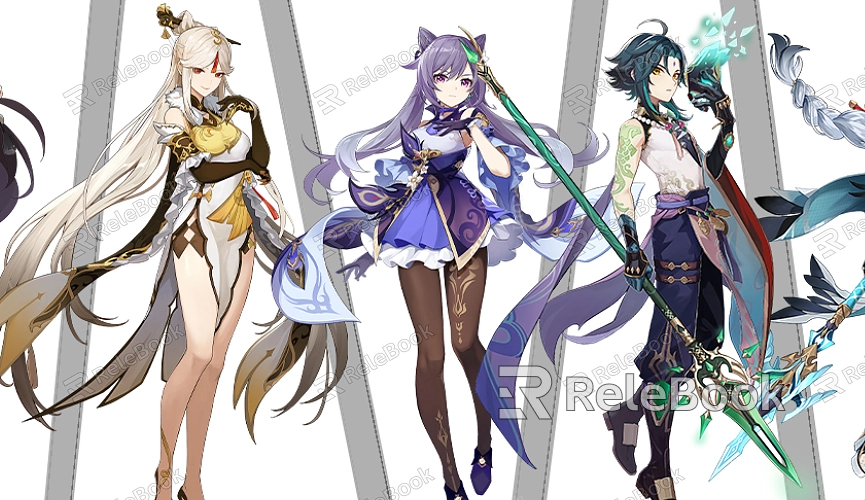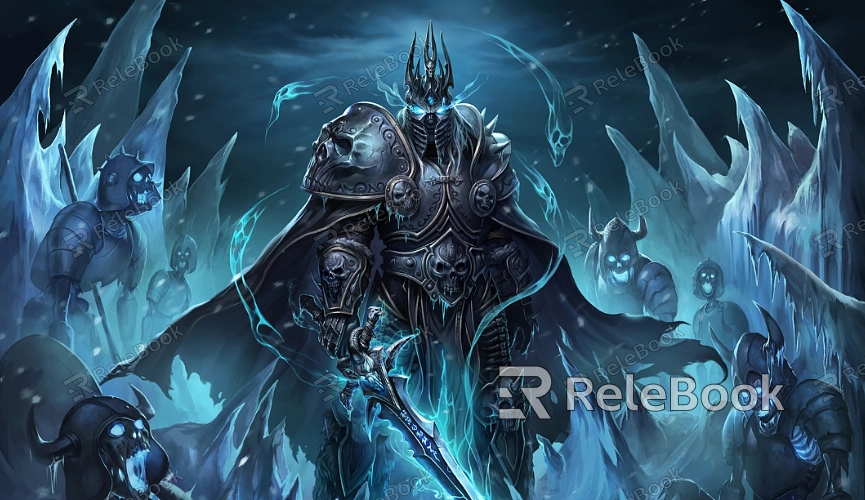How to Create a Texture for a 3D Game Model
In game design, textures are one of the key elements that bring 3D models to life, providing surface detail and a sense of realism. Whether it's a character model, a scene object, or various elements in the environment, high-quality textures can significantly enhance visual appeal. In this article, we will walk through the process of creating textures for 3D game models, covering common techniques and methods to help designers achieve more detailed and realistic game graphics.

1. Common Use Cases for 3D Game Model Textures and Popular Software
Textures are used everywhere in game development. They not only cover character models’ skins, clothes, and weapons, but are also widely applied to environmental models, items, and other scene elements. Great textures help immerse players, making the virtual world feel more lifelike. Some of the most popular software for 3D modeling and texture creation include:
Blender: An open-source 3D modeling tool with powerful features and many free plugins, ideal for model creation and texture painting.
3ds Max: Widely used in game development and animation, it offers a range of texturing and UV mapping tools.
Maya: Developed by Autodesk, commonly used in film and game production, offering robust modeling and texturing capabilities.
Substance Painter: A dedicated texture painting software that allows artists to paint textures directly onto 3D models, widely used in both gaming and film industries.
Using these tools, designers can efficiently create 3D models and textures that meet the specific needs of their game projects.
2. Preparation: Gathering References and Materials for Texture Creation
Before starting texture creation, gathering reference materials is a crucial first step. High-quality references ensure that the textures will have the right details and authenticity. Here are some common methods to collect materials:
Photograph Real-World Objects: Take photos of real-world items, especially when you need to replicate real-world textures. For example, capturing high-resolution images of skin, fabric, metal surfaces, etc., helps capture subtle details and color variations.
Download Texture Libraries: There are many professional texture websites and libraries where you can download high-quality textures. These texture libraries provide a wealth of resources, saving you time in the creation process.
If you're looking for premium 3D texture resources, you can visit Relebook at https://textures.relebook.com/ to find textures that suit your project and enhance the visual quality of your game.
3. UV Unwrapping: Preparing 3D Models for Texturing
One of the core techniques for texturing is UV unwrapping, which is the process of unfolding a 3D model’s surface into a 2D plane so that textures can be mapped onto it correctly. In Blender, 3ds Max, or Maya, the steps for UV unwrapping are generally the same:
Choose the Right Unwrapping Method: Depending on the model, choose the appropriate UV unwrapping technique. Simple geometric shapes might use automatic unwrapping, while complex models often require manual adjustments to the UV seams.
Optimize the UV Space: After unwrapping, reduce seams and overlapping areas to ensure that textures are evenly distributed. Adjust the UV coordinates to prevent distortion or stretching.
Export the UV Layout: Export the UV layout as a template for painting or drawing textures on.
UV unwrapping is a critical step in texture creation, as it ensures that the texture will map correctly to the model’s surface without distortion or unnatural effects.

4. Texturing: Adding Detail and Color to Your Model
After UV unwrapping, the next step is to paint or apply textures to the model. Depending on the needs of the model, various types of textures are used to enhance surface detail:
Base Color Texture: Apply the main color texture to the model, ensuring it meets the design requirements. You can paint this texture directly in the software or use external tools like Substance Painter.
Detail Textures: Add more intricate details such as dirt, scratches, wear and tear, or oil stains. These details can make the model appear more realistic and lifelike.
Specular and Roughness Textures: Depending on the material properties of the model, add specular or roughness maps to simulate different reflective qualities of surfaces. For example, metal surfaces will have stronger highlights, while fabric surfaces may be more diffuse.
Different types of textures work together to create a more dimensional and detailed surface for the model.
5. Normal and Displacement Maps: Enhancing Detail
To make the model’s surface appear even more realistic and intricate, normal maps and displacement maps can be used to simulate fine surface details. Normal maps enhance the model’s bumpiness by altering how light interacts with it during rendering:
Normal Maps: These maps shift the direction of light reflection to simulate tiny bumps or surface details, such as pores on skin or cracks in walls. They are highly effective for adding fine texture details.
Displacement Maps: Unlike normal maps, displacement maps physically alter the geometry of the model’s surface, making the surface detail more pronounced.
Both of these maps are often used together and can significantly increase the realism and depth of a model’s texture.
6. Rendering and Optimization: Ensuring Textures Perform Well
Once the textures are completed, rendering and optimization are essential. Rendering tests allow you to check how the textures perform under different lighting conditions and camera angles:
Adjust Lighting and Shadows: Test how the textures look under various lighting conditions to ensure they behave naturally and interact well with the game environment.
Optimize Textures: Reduce the resolution and file size of textures where possible to ensure they load efficiently in the game engine without sacrificing quality.
Rendering and optimizing ensure that the textures meet project needs and are adaptable to different in-game environments.
7. Texture Application and Export
Finally, once the textures are complete, apply them to the full 3D model and export the textures for use in the game engine. Pay attention to file formats and resolution to ensure compatibility and performance across different platforms and game engines.
By following these steps, designers can create high-quality textures for 3D game models that enhance the visual appeal and immersion of the game. Whether you're working on environment modeling, character design, or adding detail to objects, finely crafted textures play a crucial role in making your project stand out. If you're in need of professional 3D texture resources, Relebook offers a wide selection to help you streamline your workflow and enhance your game design.

